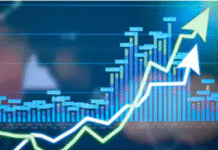

Merchandise exports bounced back in November, rising 0.76 per cent year-on-year to $3.07 billion helped by garment, home textile and jute goods shipment, official data showed yesterday.
Though November’s receipts are 8.2 per cent shy of the monthly target of $3.35 billion, the earnings in the month are the highest in the August-November period.
In the July-November period, the earnings from exports rose 0.93 per cent to $15.92 billion compared to the same period a year ago.
Garment, which accounts for about 85 per cent of the national exports, brought home $12.89 billion from July to November, up 1.48 per cent, according to data from the Export Promotion Bureau (EPB).
Ahsan H Mansur, executive director of the Policy Research Institute, said the July–November earnings did not mean that there had been a full recovery of merchandise export.
He said although the vaccine is coming, it would take time for the economies in the major export destinations like in Europe and the US to make a turnaround.
On Wednesday, the UK became the first country to authorise a Covid-19 vaccine, marking a pivotal moment in the global fight against coronavirus.
“If the exporters need any support [before the vaccine rollout in Bangladesh], the government should provide that for the sake of a speedy recovery of exports from the shocking fallouts of the Covid-19,” Mansur said.
The government’s first stimulus package, rolled out after the virus hit the shores of the country in March, paid off as exporters were able to keep production and export afloat during the most challenging time.
April, May and June were the worst periods for the export-oriented sectors of Bangladesh.
However, even if the second wave comes, the magnitude might not be like that seen during the first wave because of various protective measures and the arrival of much-needed Covid-19 vaccine, Mansur added.
Of the total earnings from the garment export in July to November, $7.13 billion came from knitwear items, which registered 4.8 per cent year-on-year growth.
Woven items fetched $5.75 billion, a decline of 8.29 per cent, EPB data showed.
Home textile exports grew significantly during the pandemic because of the rise in the use of hospital bed sheets, medical gowns and curtains, especially in the countries that have been severely hit by the rogue pathogen.
Jute and jute goods shipment rose 36.72 per cent year-on-year to $553.43 million in July to November.
The shipment of agricultural products such as tea, vegetables, tobacco, cut flowers and foliage, fruits, dry food and spices increased 0.25 per cent to $447.42 million.
Earnings from pharmaceuticals, bicycles, carpets and footwear also went up.
The shipment of leather and leather goods fell 8.32 per cent to $358.57 million, ceramics fell by 15.38 per cent to $13.04 million, and frozen and live fish dropped 1.12 per cent to $232.48 million.
Rubana Huq, president of the Bangladesh Garment Manufacturers and Exporters Association (BGMEA), said the average decline of garment export was recorded 1.48 per cent in the first five months of the current fiscal year, with the shipment of woven garments the hardest hit.
In November, the export of woven garments fell 10.48 per cent, the 16th consecutive month of decline. The knitwear export grew 4.97 per cent.
“One of the reasons why knitwear could have retained some growth is the demand for clothing for home use and the peak season of sweaters that ended in September.”
The obvious consequence of the resurgence of the virus is visible in global retail sales, she said.
Sales in Europe and the US dropped 13 per cent in October, which were already having a downward trend since March.
“Such a trend in retail is alarming for the industry,” she said.
Huq said the impact of the sluggish demand on export price is evident from the data of the National Board of Revenue. In November, RMG price saw a negative growth of 5.19 per cent.
The BGMEA chief thanked the prime minister for extending the stimulus package along with all other policy supports.
Since the recovery from the Covid-19 may take a longer than expected, the industry needs continuity of the supports in the upcoming days along with additional support to stay afloat and withstand any adverse impact, she said.









